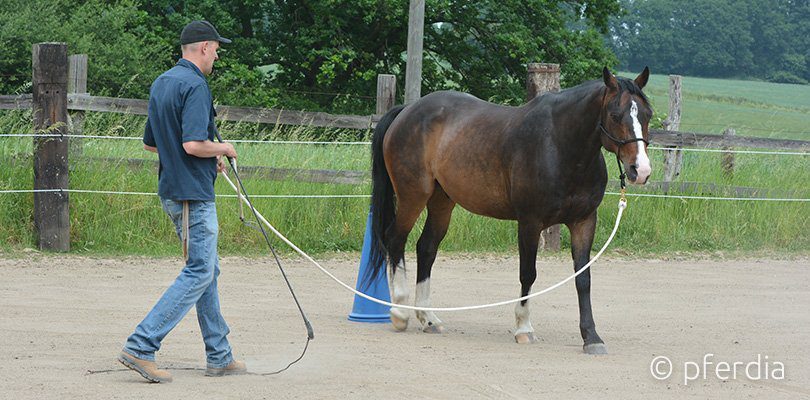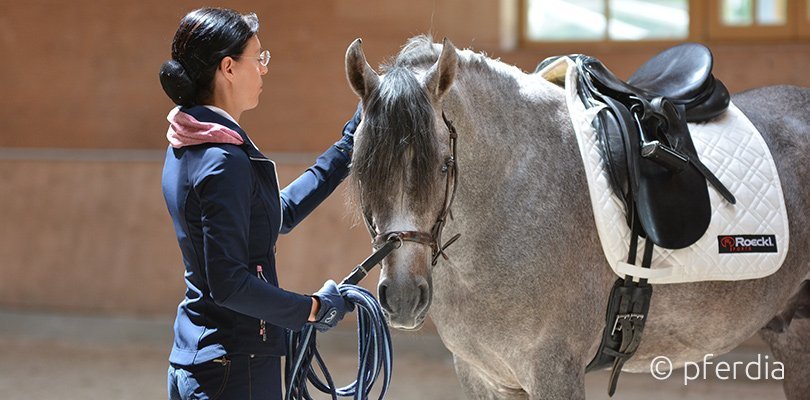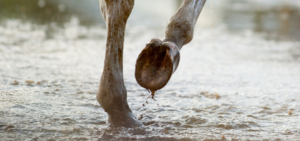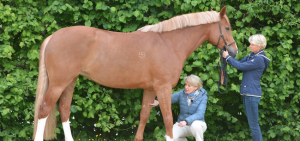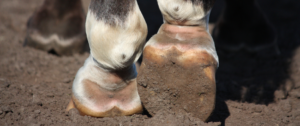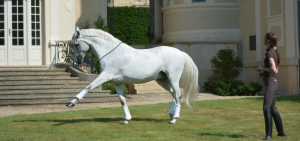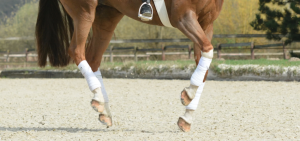If you are concerned with lunging your horse correctly, you will quickly encounter dogmatic disputes. With side reins or without, on the bit or not, with a bridle or a cavesson? In fact, there are several systems for lunging horses, and as different as they are, so varied is the equipment.
Summary
- Lunging according to the FN guidelines
- According to the classic trainers
- According to the School of Légèreté
- According to Western and horsemanship trainers
Of course, such a constellation is quite generalised, and each trainer will perhaps do it a little differently. But it will hopefully give you an idea why different people in the horse scene favour any particular lunging model.
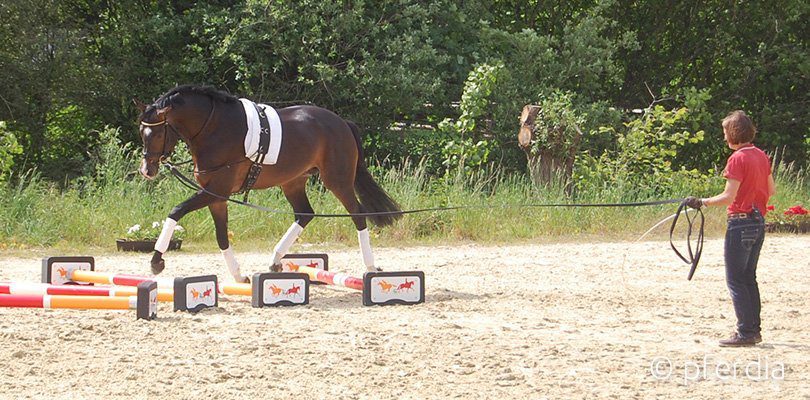
What are the FN guidelines when it comes to lunging?
- Type of bridle: Mostly with a bridle, the lunge is hooked into the inner bit ring. The use of a lunging strap is now considered obsolete and undesirable. A well-fitting cavesson may also be used.
- Auxiliary reins: Standard are side reins or Lauffer reins. Running side reins are also often used.
- Where: On the circle
- Goals of lunging: Gymnastics and exercise. The horse should lean against the auxiliary reins and find a support there. The gymnastic value can be strengthened by pole- and cavaletti work.
- A no go in this concept: lunging the horses on the headcollar!
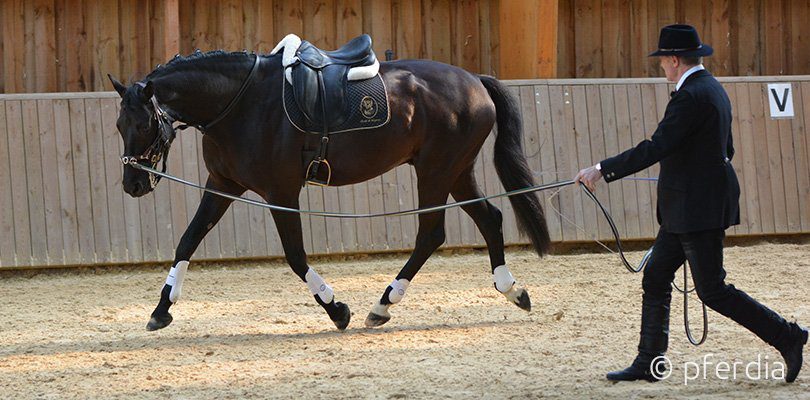
How do classic trainers like Anja Beran lunge their horses?
- Type of bridle: The lunge is attached to the lunge cavesson, slip bridle with bit can be worn for accustoming. Depending on the instructor, the continuation of this foundation may vary. In the Viennese Riding School, for example, the lunge is still hooked into the cavesson during further lunge training, and in addition, the side reins are strapped into the bit.
- Auxiliary reins: None. The horse should find a position in which the ribcage lifts and the hind leg work by the correctly executed lunge work from the casual posture.
- Where: Usually limited to the circle.
- Goals of lunging: Preparation in young horse training, gymnastics and movement.
- A no-go: Lunging the horse on the bit ring or headcollar!
How does the School of Légèreté and its maestro Philippe Karl do it?
- Type of bridle: The lunge is attached to the cavesson, under which a snaffle with a bit can be worn to get used to it.
- Auxiliary reins: Usually none, this school is very much opposed to auxiliary reins. There is an auxiliary rein that is used in exceptional cases, but the buckle prevents the horse from being fixed in one position.
- Where: Numerous lines, whole school, voltes, changes of hand.
- Goals of lunging: Gymnastics and exercising. The horse is prepared for riding in many different ways and exercises are used to encourage it to correct its own crookedness.
- No Go in this concept: lunging on the bit and with side reins!
What about Western and Horsemanship trainers?
- Type of bridle: Usually the rope halter but depending on the trainer and the goal there are big differences. Lunging on the bit is also done.
- Auxiliary reins: Without side reins (ideally, as with all other working methods, there are also black sheep here, which think up the wildest combinations).
- Where: From volt-sized circles to round pen work to free figures depending on the instructor, everything is possible.
- Goals of lunging: Main focus on basic education and connection to the handler
- No go: Exaggerated commandos and ignoring the body language between horse and handler.
